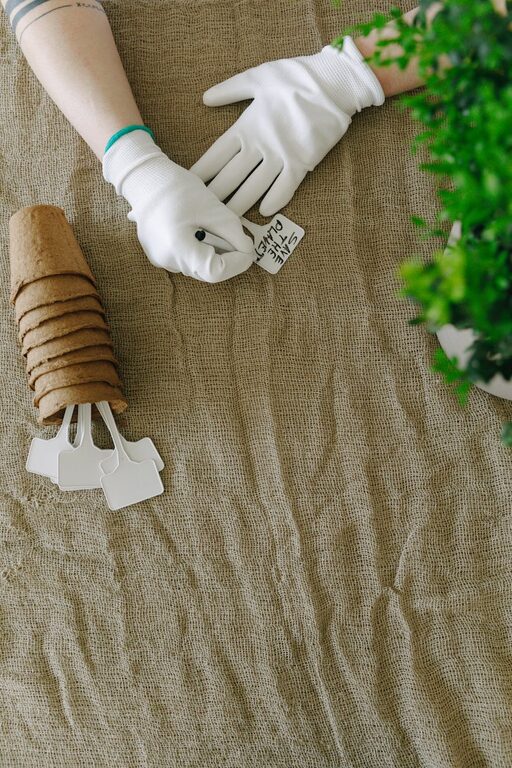Starting a small herb garden indoors is a rewarding and practical way to add fresh flavors to your cooking, beautify your home, and enjoy the benefits of gardening year-round. Whether you live in an apartment with limited outdoor space or want to have fresh herbs at your fingertips, growing herbs inside is easier than you think. This guide will walk you through everything you need to know to get started with your indoor herb garden.
Why Grow Herbs Indoors?
Growing herbs indoors has many advantages:
– Freshness: Always have fresh herbs on hand for cooking.
– Convenience: No need to run to the store for basic ingredients.
– Space-saving: Ideal for small spaces or urban living.
– Aesthetic: Adds greenery and a pleasant aroma to your home.
– Year-round gardening: No seasonal limits; grow herbs all winter long.
Choosing the Right Herbs for Indoors
Not all herbs thrive indoors, so pick those suited for the environment you can provide. Some popular and easy-to-grow indoor herbs include:
– Basil: Loves warmth and sunlight, perfect for kitchens.
– Parsley: A hardy herb that grows well with moderate light.
– Chives: Compact and easy to maintain indoors.
– Mint: Grows quickly but can spread aggressively, so best kept in a separate pot.
– Thyme: A low-maintenance, woody herb that thrives indoors.
– Cilantro: Prefers cooler, well-lit spots but can be a bit more challenging.
What You’ll Need to Start Your Indoor Herb Garden
Before planting, gather these basics:
– Containers: Choose pots with drainage holes to prevent waterlogging. Small to medium-sized pots work well.
– Potting Mix: Use a light, well-draining potting soil designed for indoor plants or herbs. Avoid garden soil.
– Seeds or Seedlings: Decide if you want to start from seeds or buy young herb plants from a nursery. Seedlings can be easier to manage for beginners.
– Watering Can: A small watering can with a narrow spout gives control over water application.
– Light Source: Natural sunlight from a south- or west-facing window is ideal. If light is limited, consider a grow light for approximately 6-8 hours daily.
– Labels: Label your pots to identify herbs easily.
Step-by-Step Guide to Planting Your Herb Garden Indoors
1. Select Your Location
Find a spot with adequate natural light. Most herbs need about 6 hours of bright, indirect sunlight per day. A south-facing window sill usually works best.
2. Prepare Your Containers
Fill your pots with potting mix, leaving about an inch of space at the top. Ensure there is adequate drainage to avoid root rot.
3. Plant Your Herbs
– For seeds: Follow the seed packet instructions on depth and spacing. Gently press seeds into the soil and water lightly.
– For seedlings: Remove gently from the nursery pot, loosen roots slightly, and plant in the soil at the same depth they were growing.
4. Water Carefully
Initial watering should moisten the soil thoroughly but avoid making it soggy. Most herbs prefer the soil to dry out slightly between watering.
5. Provide Proper Light
Place your herbs where they receive plenty of light. If natural light is insufficient, use a fluorescent or LED grow light placed 6-12 inches above the plants.
6. Maintain Humidity and Temperature
Most herbs thrive at room temperature between 65-75°F (18-24°C). Indoor air can be dry, so occasional misting or placing a small humidifier nearby can help.
Caring for Your Indoor Herb Garden
Watering Tips
– Check soil moisture daily. Stick your finger an inch into the soil; water if it feels dry.
– Avoid overwatering; soggy soil can lead to root rot.
Fertilizing
– Use a balanced liquid fertilizer diluted to half strength every 4-6 weeks during growing season.
Pruning and Harvesting
– Regularly pinch back herbs to encourage bushier growth and prevent flowering.
– Harvest leaves as you need, but avoid removing more than one-third of the plant at a time.
Pest Management
– Indoors, common pests include aphids or spider mites. Wipe leaves with a damp cloth or use natural insecticidal soap if needed.
Troubleshooting Common Issues
– Yellow leaves: Could indicate overwatering or poor drainage.
– Leggy plants: Not enough light; try moving them to a brighter spot or supplement with grow lights.
– Wilting: Underwatering or root problems.
Tips for Success
– Rotate pots periodically to ensure all sides get equal sunlight.
– Use shallow pots for herbs with smaller root systems like basil or chives.
– Consider companion planting—some herbs grow better together. For example, basil with parsley.
Conclusion
Starting a small indoor herb garden is a straightforward way to bring fresh, fragrant herbs into your daily life. With a little attention to light, water, and container choice, even beginners can enjoy the satisfaction of growing their own herbs. Whether you want basil for your pasta or mint for your tea, your indoor herb garden will offer a convenient, beautiful, and tasty addition to your home. Happy gardening!



